Devices claim to convert your normal air intake flow into a powerful spinning whirlpool of air.
As gas prices hit all-time highs, average drivers are trying out all the fuel saving techniques, including any number of inexpensive gas saving devices that purport to deliver up to 15% in gas savings.
One of the most popular ones is a small cylindrical device, advertised as a turbo fan intake, you stick into the air intake of your car’s engine. It’s sold under the name Turbonator, F1-Z, Supercharger turbine turbo, and Air Intake fuel saver.
This one’s called the Duokon Air Intake Turbo Fan.
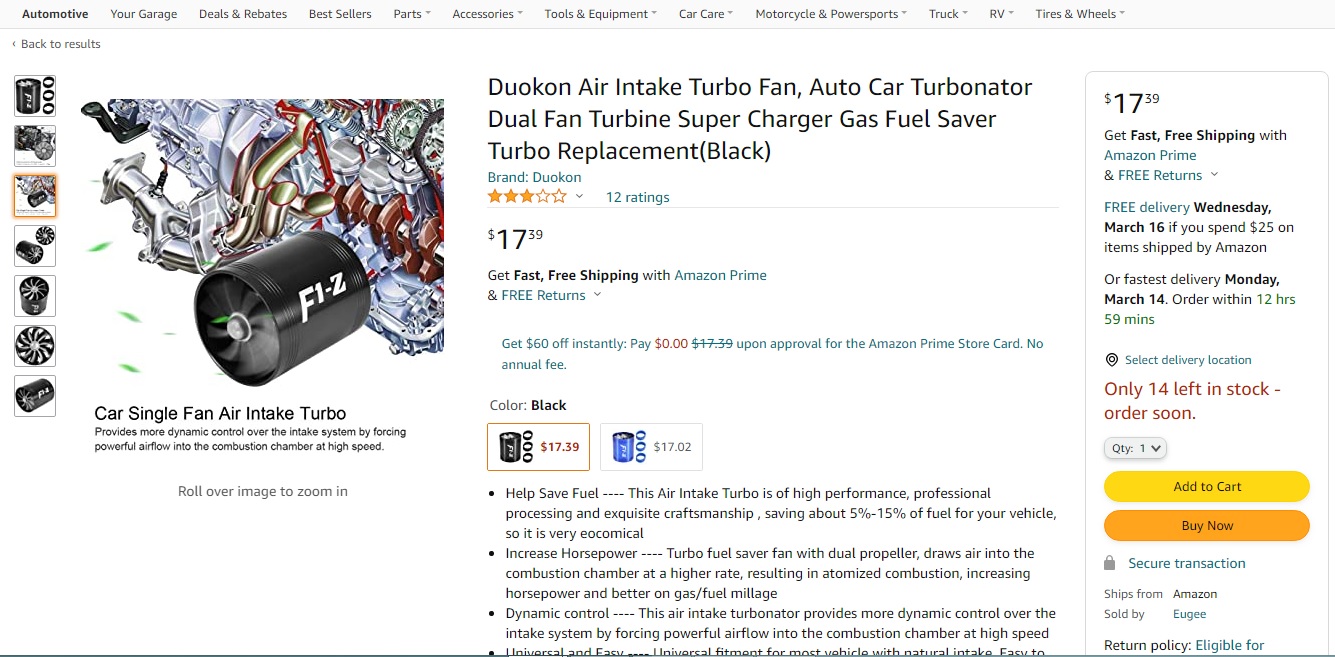
These intake turbo fan claim to improve power, overall performance, AND increase gas mileage by transforming regular intake air into a powerful flow of supercharged turbulent airflow that’s “rammed” into your combustion chamber at high speed.
Priced at less than $20 and available on reputable online sites like Amazon, it’s practically a bargain for a lifetime of more power and fuel savings.
But, do they actually work?
No, and here’s why.
Unproven claims not backed by any proven mechanics or data
Increased turbulence for better combustion and, in turn, more power and better fuel economy IS a thing. But, it’s a highly engineered process that happens inside the combustion chamber.
Here’s a simple diagram showing where air goes from outside a car into an engine. As you can see, air enters through the intake, passes through a throttle body, and is metered out to individual cylinders through the intake manifold.
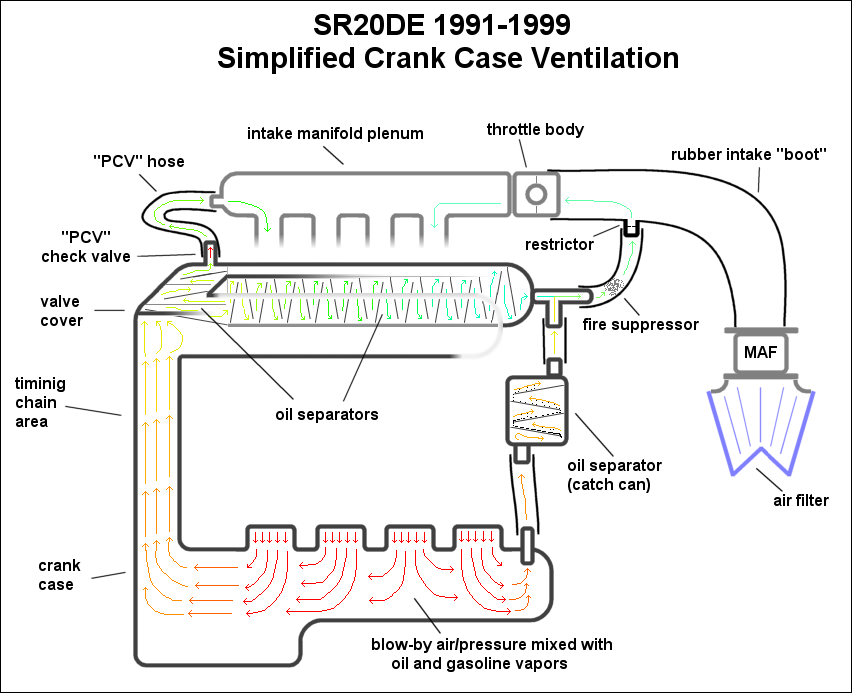
What he concludes is that even if a device increases air turbulence airflow inside an intake, “A device upstream of the throttle may make the air swirl there, but the swirl pattern will be destroyed as the flow squeezes past the throttle blade.”
And, if for some reason turbulent air makes it into the combustion chamber, ignition must be adjusted to suit the faster burn. Since your car’s ECU isn’t programmed to adjust for a higher turbulent air flow in a cylinder thanks to an aftermarket device, the effect would be worse fuel economy.
What does happen when you insert these fans into your intake is produce an obstruction that limits the amount and desired airflow pattern already engineered for maximum efficiency on your stock engine.
Since these turbo fan intakes are almost always made from cheap materials, not designed to last for the life of your car, they can break. This sends tiny pieces of plastic into your intake manifold, often into the combustion chamber itself, wreaking havoc on your engine.
There are hundreds of stories on the internet from mechanics who found these turbo fan intakes in customer cars after they reported rough running engines.
“I work as a service writer, had a customer a couple months back who had their 2017 with around 40k miles towed to the dealership because it was running extremely rough, “ says Redditor Sunshine532.
“They had installed one of these things, and it failed, causing the propeller to get jammed into the throttle body, which broke a few fins off. We were able to find all but one fin. The other we can only assume made its way into the engine somewhere. Never did get to find out how far it went as the customer did not want to pay for any more diag/tear down. They had the tow truck pick the vehicle up and haven’t heard anything since.”
“TL;DR customer installed one, it broke now their 2017 with only 40k-ish miles needs a new engine”
Widely debunked since at least 2003
These intake fans have been around a long time, since at least the 1990s. But one, produced in the mid 2000s, The Tornado Fuel Saver, brought this level of bull-you-know-what into the mainstream. While the Fuel Tornado did not utilize spinning blades to produce its swirl of turbocharged air, the psuedo-science behind its claims is arguably similar.
The Fuel Tornado aired a half-hour infomercial on late night TV and captured the attention, and wallets, of a lot of Americans.
Check out part of their infomercial below.
Thankfully, local news across the United States caught wind (no pun intended) of these scam devices and did their own investigative journalism.
They ran test drives with and without the device and reported their results. This screenshot from the embedded news report speaks for itself.
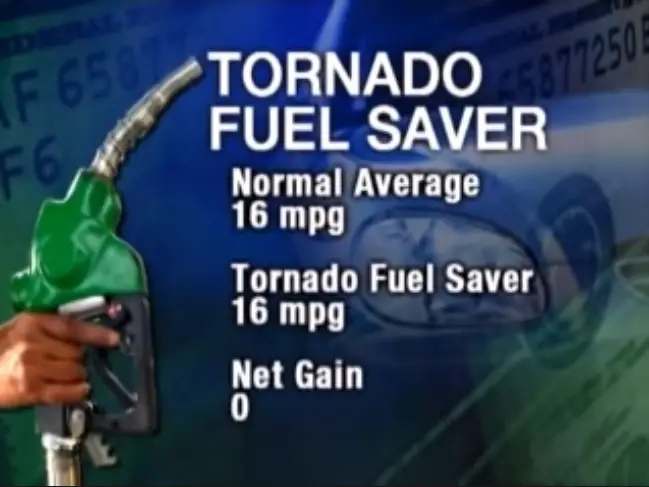
Cleetus McFarland, one of my favorite Youtubers did an informal test, pulling dyno runs with and without an air intake turbo fan and, as expected, found these cheap devices do nothing. McFarland’s Ford Mustang actually lost power. The video is quite entertaining.

“Well, we have confirmed today that the F1Z turbo launcher (that’s what he calls the air intake fan) does not work,” McFarland concludes.
The profitable truth
Like most of these scam devices sold to Americans, they’re available for wholesale from China on sites like AliExpress for as little as $3. You can imagine the fat profit margins there are, re-selling them to you for upwards of $20.
Click here to see what I mean.
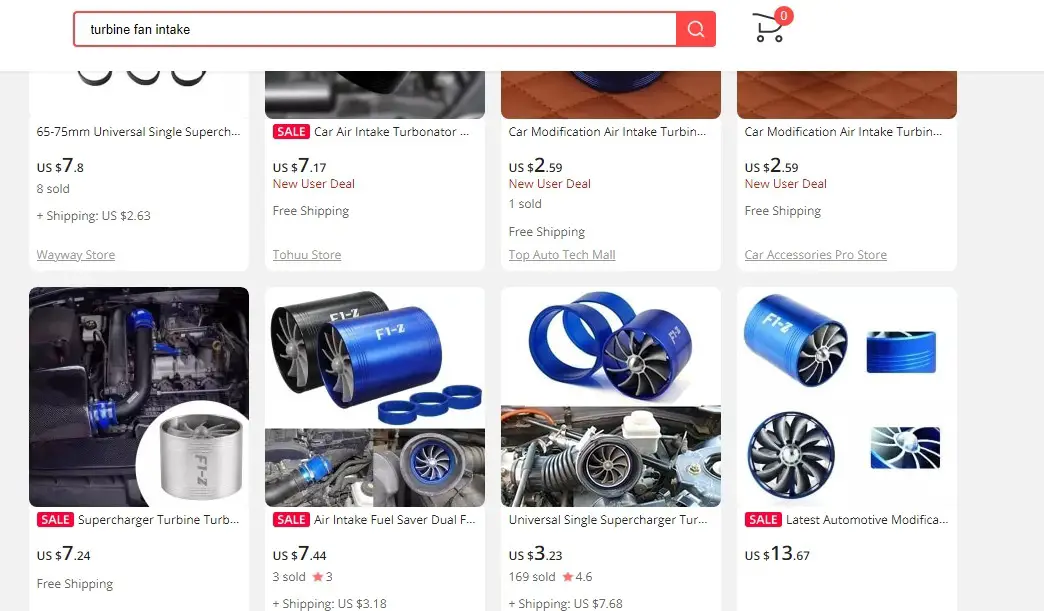
So, for any device under any name that you have to stick in you intake, know that not only does it not work, you’re overpaying for an already debunked scam.


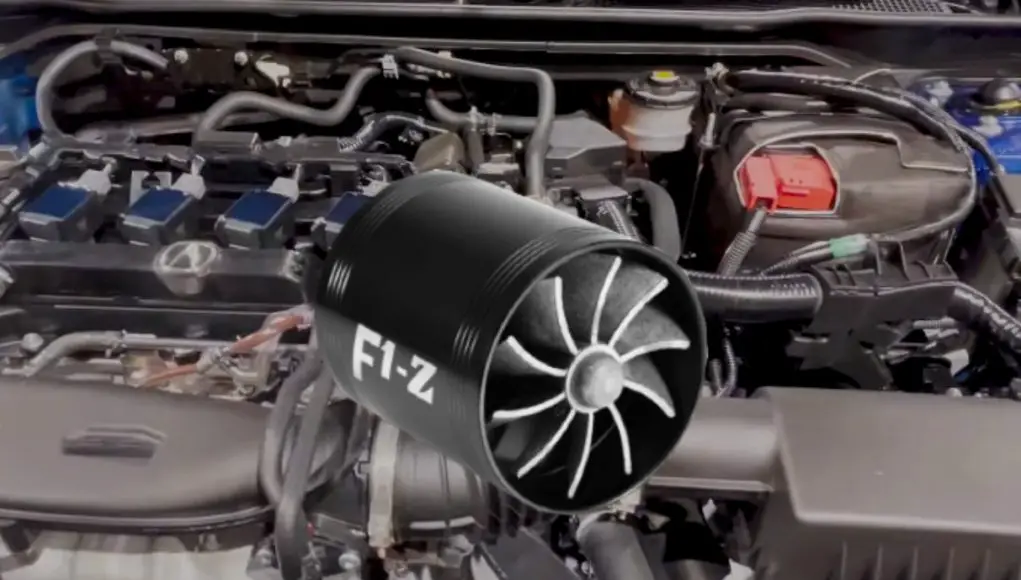


One thing I point out to friends messing around with these gimmicks, are modern ecu’s and catalytic converters. The engines burn very very efficiently, near stoichiometrically. I think cat convertors clean up a percent, or a few percent of the combustion left overs. You’d plug up the cats if a normal engine left anything significant to be reclaimed.